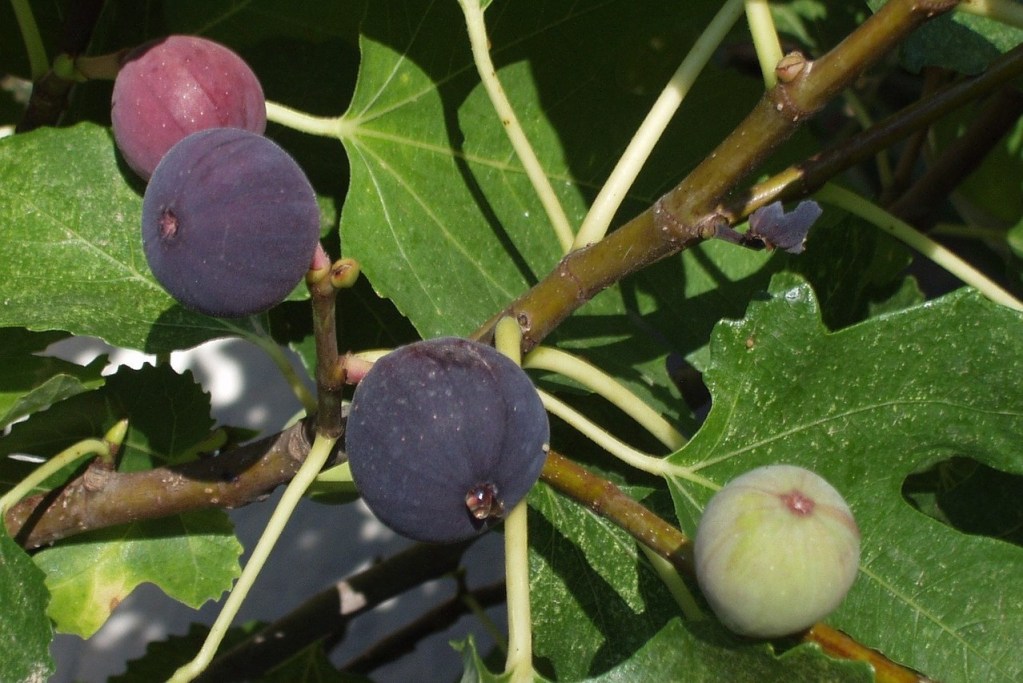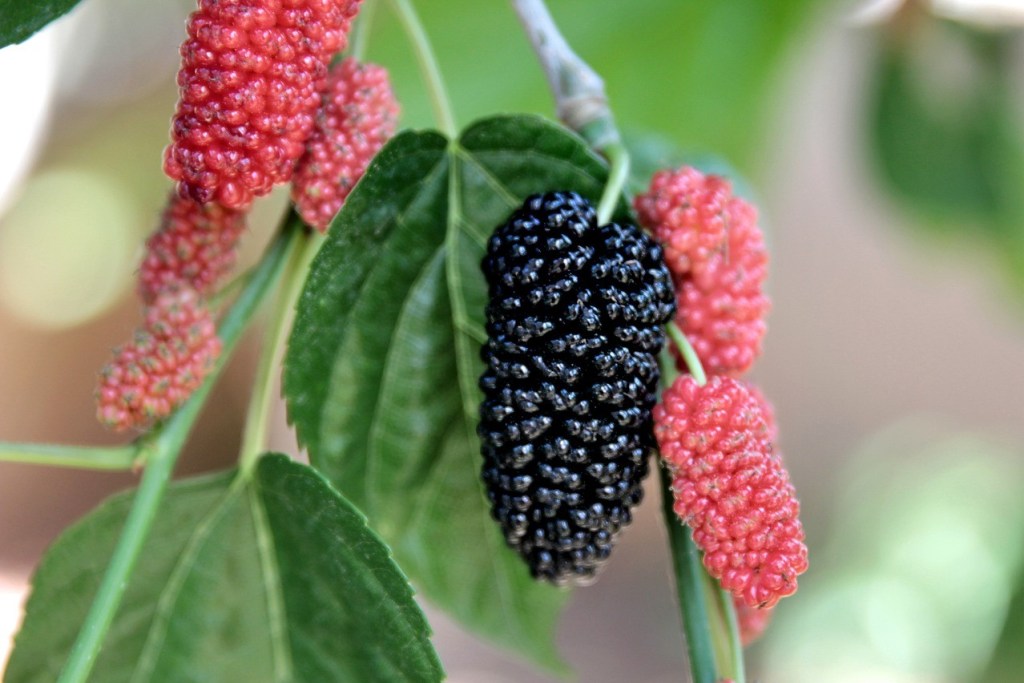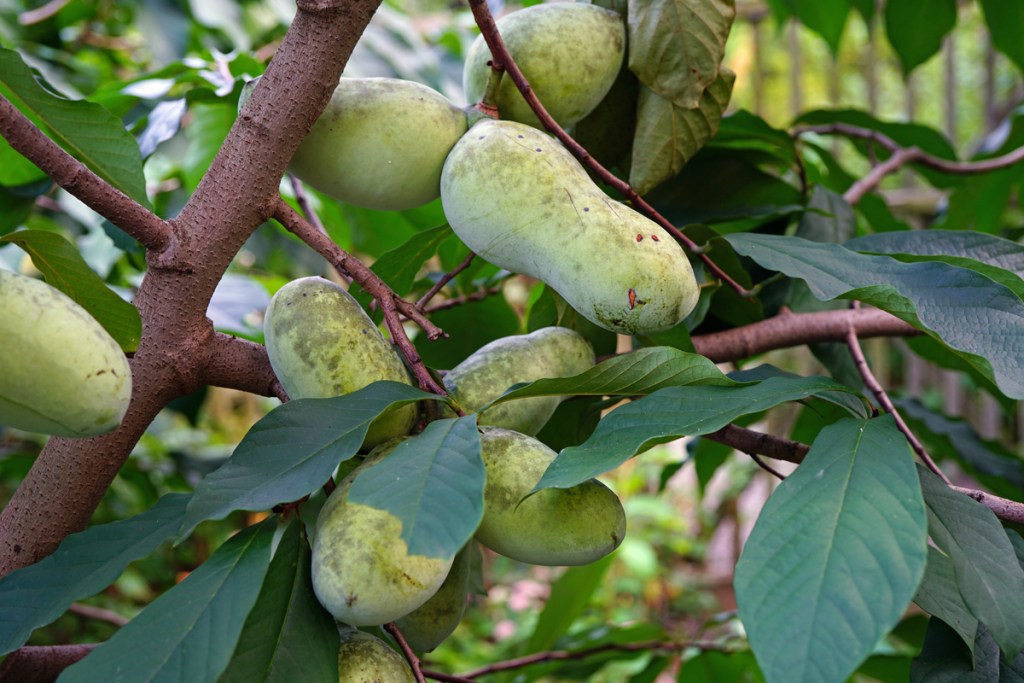Spring is a favorite season of many gardeners, and for good reason! The plants begin to wake up, the ground thaws, and you can begin planning and planting your next flower, fruit, or vegetable garden. There’s a wide variety of plants available, from gourds to stone fruit, edible flowers to berries. If you’ve decided to include some fruit in your garden, but aren’t sure which fruits to pick, then you’re in luck! We’ve selected some of our favorite fruits to plant in spring, just for you.
Blackberries
Ripe, juicy blackberries are a delicious treat, and they’re easy to grow. Plant them in early spring and make sure they’re in full sun. Blackberries do best in rich, well-draining soil. Mixing compost into your soil can help significantly. Blackberries need roughly an inch of water each week, and they thrive in soil that is consistently moist but not soaking wet. Most blackberry varieties are ready for harvest in mid to late summer.
There are three types of blackberry: erect (bush-like), trailing (vine-like), and semi-erect (halfway between erect and trailing). Trailing and semi-erect varieties benefit from being trellised. Trailing varieties tend to produce larger harvests, larger berries, and more flavorful berries. However, they’re also more vulnerable to damage and disease. Erect varieties tend to produce smaller harvests, with smaller, less flavorful berries, but are much sturdier. Semi-erect varieties are somewhat sturdy, with large harvests of berries that may not be as flavorful as trailing varieties.

Figs
Fig trees take a little longer to grow, but they’re well worth the wait. Start by planting them in early spring. You can find fig saplings in nurseries or online; it’s easier to start from a sapling than from seeds. Plant them in full sun in an area with well-draining soil. Figs are less picky about soil types than other fruit trees, but they do best in soil with plenty of organic matter. Adding compost can help with that. Be sure to plant them away from any buildings, as they can grow fairly large.
During winter, protect young fig trees from the cold with mulch, plant covers, or windbreaks. You can also grow young fig trees in containers and bring them inside during winter. In summer, feed them nitrogen-rich fertilizer to speed their growth. Fig trees typically take three or four years before they’re ready to harvest. Before this, they may produce some fruit, but it typically will not ripen.

Honeydew melons
Honeydews need warm weather to grow, so they’re typically planted in mid to late spring. However, if you live in an area with warmer winters and less frost, then you may be able to plant them in early spring alongside your blackberries and figs! Whether early, mid, or late spring, plant them in full sun.
In addition to heat, honeydews need moisture. Setting up a drip irrigation system and applying a layer of mulch under them can help tremendously with this. Make sure your honeydews have room to spread out or trellis them. Most honeydew varieties are ready to harvest after two and a half to three months.

Mulberries
Mulberries aren’t sold commercially as often as other berries due to their fragility, so there’s a good chance you’ve never tasted one. They’re sweet, a little tart, and incredibly juicy. Mulberries grow on medium-sized trees, so they need 10 to 20 feet of space. They can be grown in full or partial sun and are tolerant of most soil types, including poor soil.
Keep your soil evenly moist while your mulberry tree grows. Adding a layer of mulch around it can increase your soil’s water retention, as well as suppressing weeds. It can take two or three years for a mulberry tree to begin producing fruit, but some varieties can fruit earlier. Mulberries are typically harvested in mid to late summer, and they produce quite a bit of fruit.

Pawpaw
Pawpaw trees are native to North Carolina, and their incredibly soft texture means you won’t see them on grocery store shelves. They’re sweet and creamy, with a distinctly tropical taste. Before planting, be sure you have the right plant! A few different fruits are referred to as pawpaws, so make sure you have Asimina triloba. Although it looks and tastes tropical, pawpaw trees are hardy in zones 5 through 9.
Choose a location with full sun and protection from any harsh or strong winds. Pawpaw trees grow best in rich, well-draining soil. Mix compost or leaf mulch into your soil before planting if your soil is poor. Pawpaw trees can grow fairly large but can be kept in check through pruning. Pawpaws are not self-pollinating, so two or three trees are necessary to ensure your tree fruits. Harvest time for pawpaws is typically in late summer or early fall.
Plant these five fruits in spring for a varied and delicious harvest! Spring is a perfect time to plant many different plants, so why not mix things up? Plant some of your favorites right alongside a few new ones. Whether you plant everything on this list, just a few of them, or even none at all, enjoy your spring garden and the harvest that comes along with it. After all, few things are sweeter than the fruits of your own labor.
Editors' Recommendations
- The best little flowers to grow when you’re low on space – plant these this spring
- Have a gross mealybug infestation on your plants? Try one of these remedies
- Unique and whimsical flowers to add to your collection for a fairy-tale garden landscape this spring
- Do you live in climate zone 10? Here’s our guide to choosing the perfect climate zone 10 plants
- Have you ever wondered if potatoes are fruits or vegetables? We have answers




